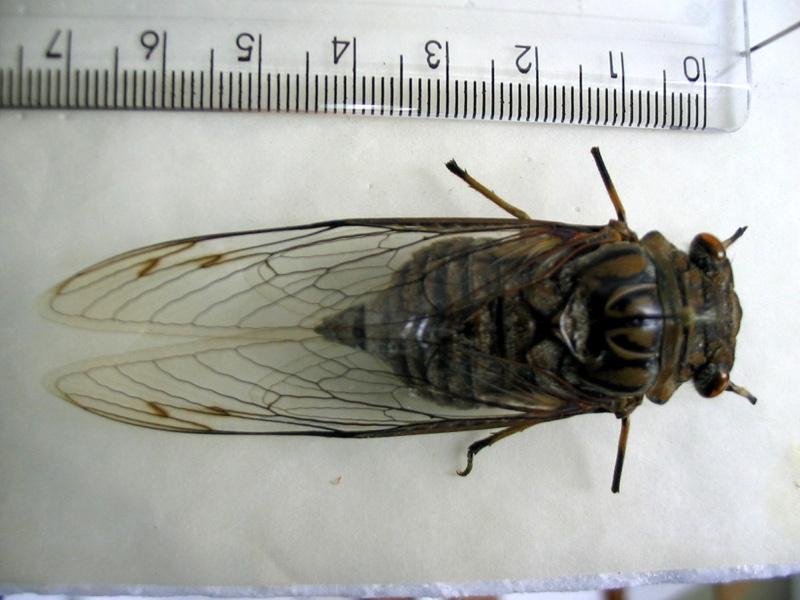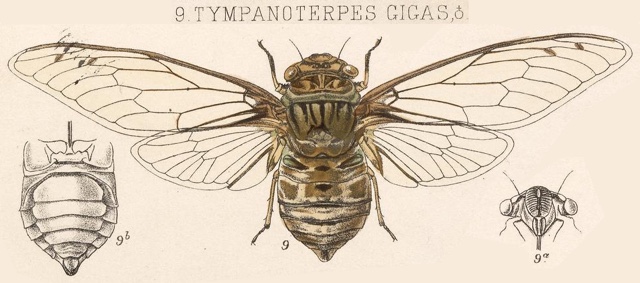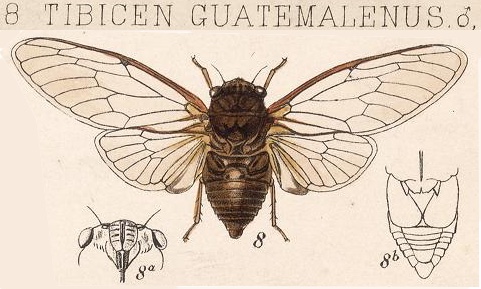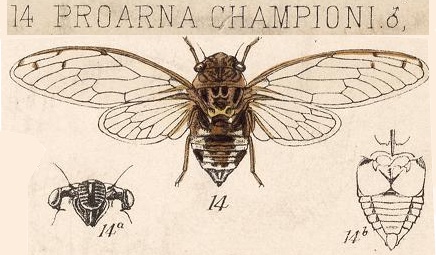Cicada pennata (Distant, 1881) is a cicada found in Guatamala.
Cicada pennata (Distant, 1881) was formerly known as Tettigia pennata.
Scientific classification:
Family: Cicadidae
Subfamily: Cicadinae
Tribe: Cicadini
SubTribe: Cicadina
Genus: Cicada
Species: Cicada pennata (Distant, 1881)
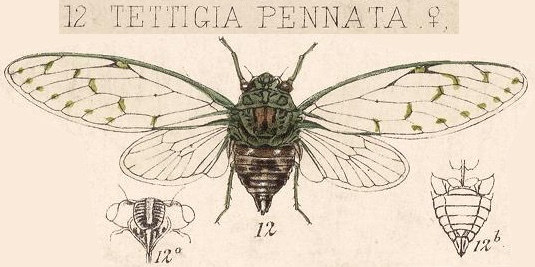
The image says Tettigia pennata, but the newest name of this cicada is Cicada pennata.
Species description by W. L. Distant:
Head, pronotum, and mesonotum greenish. Head with the frontal marginal angles, a transverse streak on lateral margins, inner margin of eyes, and area of the ocelli black; ocelli red. Mesonotum with a central longitudinal suboblong spot, rounded posteriorly and angulated anteriorly, on each side of this a short oblique streak behind eyes, and a D-shaped spot near each lateral margin black. Mesonotum with four large, central, and somewhat irregular black-bordered obconical spots, a black spot on each lateral margin, and two small spots of the same colour in front of the basal cruciform elevation. Abdomen above dull testaceous, with the basal angles and anal appendage greenish, somewhat thickly clothed with white pile. Body beneath greenish; transverse striae to face, bases and apices of coxse, apex of rostrum, segmental incisures, and inner margins of anal appendage black. Legs greenish, apices of femora black, apices of tibiae and tarsi dull testaceous, tarsal claws black. Tegmina pale hyaline. Neuration of basal half greenish, remainder fuscous ; base of first ulnar area, transverse vein at base of second ulnar area, a central spot on the longitudinal vein enclosing third ulnar area, and transverse vein at base of eighth apical area, and claval margin black ; a prominent white opaque spot at base of first ulnar area. Anastomoses, and a submarginal row of spots situated on veins, pale fuscous. Wings pale hyaline; veins fuscous, with some of the discal ones greenish.
The face is globose, strongly and transversely striate, with a central longitudinal sulcation; rostrum reaching the posterior coxae; head small, with the eyes very globose, and much narrower than base of pronotum.
Long. 17 millim., exp. of tegm. 66 millim.
References:
- The illustration comes from Biologia Centrali-Americana. Insecta. Rhynchota. Hemiptera-Homoptera. Vol. 1. By W. L. Distant F.E.S. and The Rev. Canon W. W. Fowler, F.L.S. (1881-1905). Read it on the Biodiversity Heritage Library website.
- Species name information comes from Allen Sanborn’s Catalogue of the Cicadoidea (Hemiptera: Auchenorrhyncha).

